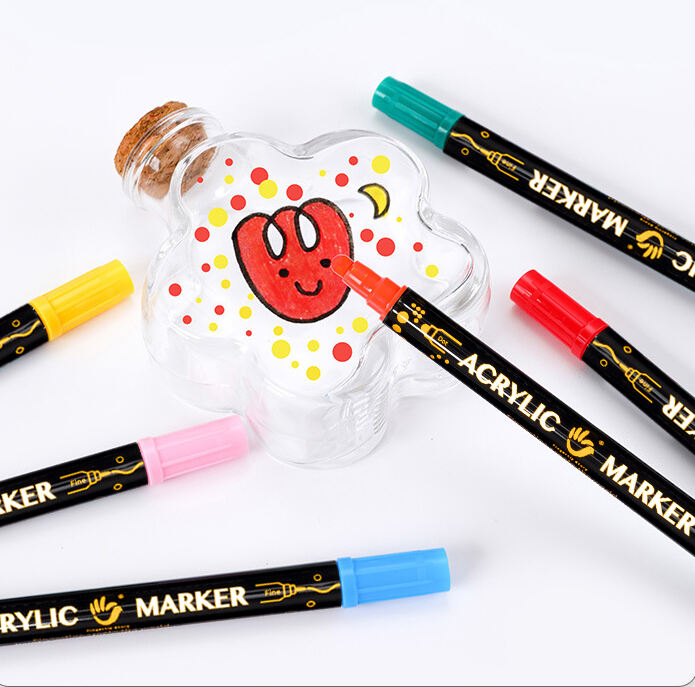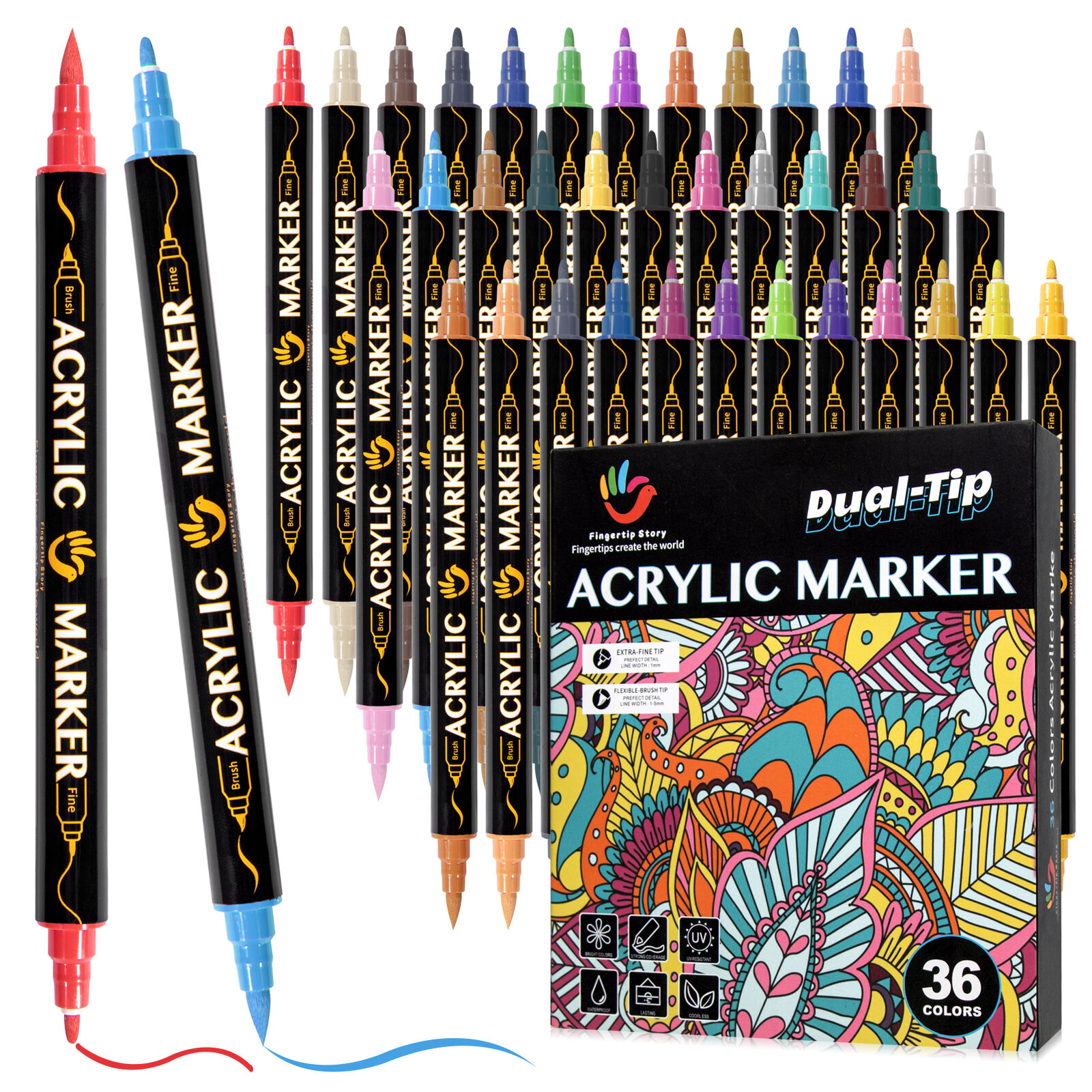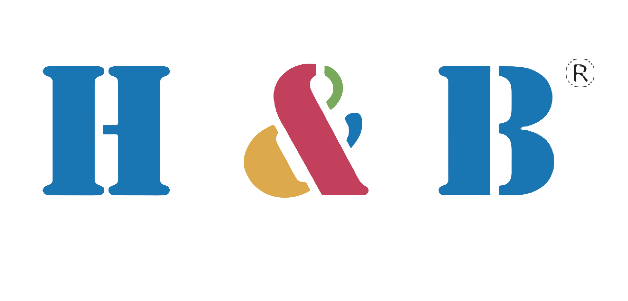적절한 스케치 연필 관리의 중요성
선의 품질과 정확성에 미치는 영향
연필을 잘 관리하면 예술 작품 제작 시 선의 외관과 느낌에 실제적인 차이를 만들 수 있습니다. 연필이 뾰족할 때는 전문 아티스트가 세부 작업이나 감각적인 표현에 필요한 또렷하고 매끄러운 선을 만들 수 있습니다. 반면, 무딘 연필은 종이 표면에 울퉁불퉁한 가장자리와 일관되지 않은 압력을 남기게 되며, 이는 작업 흐름을 방해할 수 있습니다. 많은 아티스트들이 관리가 잘되지 않은 도구를 사용할 때 이러한 방해를 경험합니다. 최고의 아티스트들은 이론보다 경험을 통해 연필을 최상의 상태로 유지하는 것이 결과물에 매우 중요하다는 것을 알고 있습니다. 정기적으로 연필을 깎는 것은 미적인 이유뿐 아니라, 교차 해치ング이나 세부 디테일 작업과 같은 기법의 결과에도 직접적인 영향을 미칩니다.
장기적인 비용 절감
연필을 조금 더 세심하게 관리하는 데 시간을 투자하면 장기적으로 비용 절감 효과를 볼 수 있습니다. 연필을 제대로 잘 갈고 조심해서 다룬다면 짧아졌다고 곧바로 버리지 않고 훨씬 오래 사용할 수 있습니다. 실제로 어떤 사람들은 계산을 해본 결과, 예술가가 새 연필을 계속 사는 대신 자신이 쓰는 연필을 잘 관리할 경우 매년 교체 비용으로 약 30%를 절약할 수 있다는 것을 알아냈습니다. 이러한 절약은 창의적인 작업을 하면서도 경제적으로 행동하려는 모든 사람들에게 합리적인 방법입니다. 게다가 아이디어가 떠오를 때마다 언제든 바로 사용할 수 있도록 소중한 도구들이 날카롭고 준비된 상태를 유지한다면 프로젝트 도중에 새 도구를 계속 찾아다녀야 하는 번거로움도 줄일 수 있습니다.
예술적 일관성 유지
다양한 작품에서 그림이 일관되게 보이도록 하려면 연필을 관리해서 좋은 상태로 유지하는 것이 중요합니다. 선의 굵기가 일정하고 색조가 작품 간에 크게 달라지지 않으면 예술가들이 자신만의 스타일을 유지할 수 있습니다. 대부분의 예술가들은 연필을 정기적으로 깎고 청소해 주는 것이 자신만의 독특한 스타일을 발전시키는 데 큰 차이를 만든다고 느낍니다. 도구는 단지 예상대로 작동해 주어야 합니다. 새로운 스케치를 시작하기 전에 연필 끝부분을 점검하는 간단한 습관만으로도 결과물이 의도한 대로 나오는 데 크게 기여합니다. 이런 세심한 주의는 나중에 실수를 고치느라 드는 번거로움을 줄여 생산성을 높일 뿐만 아니라, 일관되지 않은 선을 걱정하는 대신 창의적인 사고에 집중할 수 있는 여유를 만들어 줍니다.

필수적인 연마 도구 및 기술
싱글 에지 라이저 vs. 전통적인 연필 가는기
연필을 오래 사용하고 더 나은 성능을 원한다면 올바른 연필 깎는 방법을 선택하는 것이 중요합니다. 많은 아티스트들이 단일날(싱글 엣지 레이저)을 선호하는 이유는 뾰족한 정도와 끝부분의 각도를 정확하게 조절할 수 있기 때문입니다. 이는 세부적인 작업을 할 때 특히 중요한데, 섬세한 부분에서는 차이가 큽니다. 가느다란 선을 그리는 것을 좋아하는 사람들은 보통 이 방법을 가장 먼저 선택합니다. 하지만 전통적인 연필 깎개도 또 하나의 선택지입니다. 이 방법은 사용이 매우 간편하며 대부분의 일반적인 드로잉 작업에는 충분히 좋은 결과를 제공합니다. 일관된 결과를 얻을 수는 있지만, 특별한 형태나 각도를 만들기에는 한계가 있을 수 있습니다. 이러한 선택을 할 때 아티스트들은 자신이 주로 어떤 작업을 하는지 고려해야 합니다. 어떤 사람들은 날카로움을 더 중요하게 여기기 때문에 레이저로 깎는 방법에 약간의 추가 노력이 들더라도 선호할 수 있지만, 다른 사람들은 바쁜 작업 시간에는 시간을 절약할 수 있다는 점에서 표준 깎개를 계속 사용하기도 합니다. 결국 이 문제는 특정 프로젝트에서 정밀도가 속도보다 우선시되는지에 따라 달라집니다.
사ンド패들 샤프너 for Custom Points
샌드패들 연필깎이는 예술가들이 다양한 드로잉 기법에 따라 연필 끝을 원하는 대로 모양을 만들 수 있게 해주는 기능에서 두드러집니다. 부드러운 흑연 심을 사용하는 사람들에게 특히 뛰어난 성능을 발휘하는데, 이는 심이 쉽게 부러지지 않도록 보다 정밀한 조절이 가능하기 때문입니다. 가장 큰 장점은? 연필심을 더 오래 사용할 수 있으면서도 날카로운 끝을 유지할 수 있어, 스케치 스타일을 바꿀 때마다 연필 하나로 더 오래 쓸 수 있다는 점입니다. 대부분의 예술가들은 샌드패들 연필깎이를 사용하면 연필의 성능이 오랫동안 유지된다는 것을 알게 되며, 특정 프로젝트에 필요한 맞춤형 끝 모양 덕분에 작업 품질 전반에 걸쳐 개선된 결과를 경험하게 됩니다.
최적의 심 길이 유지
연필에서 나오는 심의 길이를 적절하게 조절해 주는 것이 결과물의 품질에 큰 차이를 만듭니다. 예술가들이 정기적으로 연필을 점검하면, 너무 자주 심을 갈아주는 일을 피할 수 있는데, 이는 시간과 재료를 낭비할 뿐 아니라 연필의 수명을 줄이기 때문입니다. 연필이 너무 짧아지면 다루기가 불편해져서 오랜 시간 동안 그림을 그리는 것이 어려워집니다. 현명하게 연필을 관리하면 집중력을 유지하는 데 도움이 되고, 긴 시간 동안 그림을 그릴 때도 끊김 없이 작업을 이어갈 수 있습니다. 심을 제대로 관리해 주면 하루 종일 스트레스를 줄일 수 있으며, 예술가들이 매끄럽게 선을 긋는 만큼 보다 높은 품질의 작품을 제작할 수 있습니다. 반면 관리가 잘되지 않은 도구를 사용하면 작업에 방해가 될 수 있습니다.
연필 보호를 위한 지능형 저장 솔루션
이상적인 습도 및 온도 조건
연필을 올바르게 보관하는 것은 연필이 오래 사용되도록 하고 성능을 잘 유지시키기 위해 매우 중요합니다. 가장 이상적인 보관 장소는 섭씨 약 15~24도(화씨 60~75도)의 온도가 유지되며, 공기가 너무 건조하거나 습하지 않은 곳입니다. 여기서 말하는 습도는 40%에서 60% 사이를 의미합니다. 이러한 조건은 나무 부분이 휘어지지 않도록 방지하면서 내부의 흑연을 무사하게 보존하여 우리가 가장 필요로 할 때 연필이 쉽게 부러지지 않도록 해줍니다. 대부분의 예술가들은 이미 이 사실을 알고 있지만, 난방기 근처나 곰팡내 나는 지하실에 연필을 두면 수명이 크게 줄어들 수 있음을 상기하는 것이 중요합니다. 직사광선으로부터 벗어난 간단한 서랍은 연필의 나무 몸체와 내부 소중한 흑연 심을 보존하는 데 매우 효과적입니다.
경도 등급별로 정리하기
연필을 경도에 따라 분류하면 창의적인 작업을 할 때 큰 차이를 보인다. 예술가들이 연필을 이와 같이 정리해 두면, 세부 라인이나 어두운 음영 효과와 같이 특정한 작업이 필요할 때 올바른 연필을 찾는 데 소요되는 시간이 줄어든다. 이러한 방식의 정리는 작업 중 방해를 줄여 주며, 예술가들이 진짜 중요한 작업인 작품 자체에 집중할 수 있도록 해준다. 모든 물건을 라벨이 붙은 용기나 케이스에 보관하는 것은 단순히 정돈된 외관을 제공하는 것 이상의 의미가 있다. 이는 연필이 부러지는 것을 방지하고, 미술 용품들이 어지럽혀지는 것을 막아준다. 연필을 제대로 분류하게 되면 작업 흐름이 훨씬 원활해진다는 점을 대부분의 예술가들은 주변에 널리 알려 말하곤 한다.
보호 케이스와 롤 사용하기
누군가 그림 연필이 손상되지 않고 오래 사용하길 원한다면, 좋은 보호 케이스와 연필 보관 도구를 갖추는 것이 합리적인 선택입니다. 연필 보관 도구는 귀중한 연필이 충격, 습기 및 시간이 지남에 따라 연필을 망가뜨리는 환경 요소로부터 안전하게 보호해 줍니다. 예술가들은 휴대용 옵션을 좋아하는데, 이는 중요한 도구를 잃어버리거나 부술 걱정 없이 어디든 스케치 용품을 가져갈 수 있다는 의미이기 때문입니다. 고품질 보관 도구는 연필이 부러지는 것을 크게 줄여 주며, 모든 것을 체계적으로 정리해 줍니다. 예술 용품을 진지하게 다루는 사람들에게 적절한 보호는 선택 사항이 아니라 필수적입니다. 그리는 도구들이 몇 달이 아니라 수년 동안 날카롭고 사용 가능하게 하려면 말입니다.

환경적 손상 방지: 습기 & 열
습도가 어떻게 나무 케이스를 변형시키는가
나무 연필 케이스는 습도가 높은 환경을 전혀 잘 견디지 못합니다. 과도한 습기는 케이스가 휘어지게 만들며, 이로 인해 연필의 사용감이 나빠지고 손에 잡히는 느낌도 불편해집니다. 휘어진 연필로 그림을 그리려는 예술가들은 보통 오랜 작업 시간 후에 선이 고르지 않거나 손이 아프다는 결과를 맞이하게 됩니다. 더 심각한 문제로는 과도한 습기가 있을 경우 나무에 곰팡이가 자라나 연필 자체를 망가뜨려 그림 그리는 것이 짜증 나고 번거로운 일이 되기도 합니다. 그래서 똑똑한 예술가들은 연필을 욕실이나 부엌처럼 습도가 높은 공간에서 떨어진 밀폐된 상자나 서랍 안처럼 건조한 장소에 보관하려 합니다. 연필 주변의 환경을 조절해 주면 오랫동안 곧고 잘 작동하는 상태를 유지할 수 있으며, 진지한 예술가라면 누구나 이 노력이 가치 있다는 것을 알고 있습니다.
온도 극단과 그래파이트의 완전성
극단적인 온도는 특히 연필의 흑연 심에 큰 영향을 미칩니다. 너무 더우거나 추운 환경에서는 연필이 쉽게 부러지고 종이에 일관되지 않은 자국을 남겨 전체적인 창작 과정에 방해가 됩니다. 연필 내부의 흑연은 온도가 높아지면 팽창하고, 낮아지면 수축하기 때문에 예술가가 작업할 때마다 다르게 반응하게 됩니다. 그래서 진지하게 그림을 그리는 사람들은 연필을 실온에 보관하는 것이 매우 중요합니다. 경험이 많은 드로잉 아티스트들은 흑연을 올바르게 보관하면 부러지지 않고 매끄러운 선을 그릴 수 있다는 것을 잘 알고 있습니다.
기후 조절을 위한 최선의 방법
연필을 이용해 작업하는 아티스트들은 연필을 좋은 상태로 유지하는 것이 얼마나 중요한지 잘 알고 있습니다. 연필을 보관하는 곳에 간단한 제습기를 두면 연필이 휘어지거나 사용하지 않는 기간 동안 곰팡이가 생기지 않도록 적절한 수분 수준을 유지할 수 있습니다. 작업 공간에 온도 조절 장치를 갖추는 것도 매우 중요합니다. 고온의 환경에 방치된 연필은 부드러워져 쉽게 부러지고, 추운 환경에서는 연필이 부рит하게 변할 수 있습니다. 주기적으로 이러한 환경을 점검하면 모든 것이 제대로 작동할 수 있습니다. 아티스트가 믿을 수 있는 재료를 손쉽게 사용할 수 있을 때, 그들은 부러진 심에 대한 걱정을 줄이고 대중의 눈길을 사로잡는 뛰어난 작품에 더 많은 시간을 투자할 수 있습니다.
연필 및 작업 공간 청소 기법
안전한 그래파이트 잔여물 제거
연필에 묻은 흑연을 제거하는 것은 연필을 오래 사용하고 그림이 선명하게 보이도록 하는 데 매우 중요합니다. 대부분의 예술가들은 미술 용품용으로 특별히 제작된 부드러운 브러시를 사용하면 놀라운 효과를 얻을 수 있다고 생각합니다. 연필 표면을 부드럽게 쓸어내리면 흠집 없이 잘 지워집니다. 브러시를 사용하면 도구를 더 오래 사용할 수 있습니다. 더 심한 얼룩을 처리할 때는 극세사 천을 비눗물에 살짝 담가두는 것을 추천합니다. 연필 몸체를 따라 조심스럽게 닦아내면 나무 껍질과 내부 흑연을 모두 보호하면서 눈에 거슬리는 자국을 제거할 수 있습니다. 이러한 관리에 시간을 투자하는 것이 큰 차이를 만듭니다. 깨끗한 연필은 전반적으로 더 나은 성능을 발휘하기 때문에 매일 정교한 작품을 만들 때 좌절감을 덜 느끼게 됩니다.
최적의 성능을 위한 지우개 관리
지우개를 좋은 상태로 유지하는 것은 연필 자국을 정돈되지 않은 상태로 남기지 않고 제거할 때 큰 차이를 만듭니다. 예술가들은 지우개가 깨끗하게 유지되도록 하고 자주 마모나 손상의 징후가 있는지 확인해야 합니다. 지우개가 납작해지거나 부스러기처럼 갈라질 때쯤이면 교체할 시기입니다. 그래야 그림이 엉성하거나 불완전하게 보이지 않게 됩니다. 지우개를 올바르게 보관하는 것도 중요합니다. 왜냐하면 지우개는 더운 곳에 두면 딱딱하게 굳어지고 시간이 지남에 따라 부드러움을 잃을 수 있기 때문입니다. 이러한 간단한 습관들을 통해 예술가들은 제 기능을 하는 지우개를 사용할 수 있게 되며, 이는 종이를 보존하고 완성된 작품이 전문적으로 보이도록 해줍니다.
드로잉 표면 번짐 방지
작업 공간을 깨끗하게 유지하는 일은 단순히 산만함을 줄이는 것을 넘어서 실제로 그림을 그리는 도중에 생기기 쉬운 번짐 현상을 방지하는 데도 도움이 됩니다. 고품질의 청소 용품으로 표면을 제대로 닦아주면, 완성된 작품에 오염물이 묻을 가능성이 훨씬 줄어듭니다. 정기적으로 청소와 정리를 하는 예술가들은 종종 더 많은 영감을 얻게 되는데, 그 이유는 어지럽혀진 환경이 창의적인 사고를 억누를 수 있기 때문입니다. 먼지와 손자국이 없는 깨끗한 작업 공간은 화가나 드로잉 아티스트가 복잡한 환경과 싸우는 대신, 가장 중요한 예술 창작 과정에 보다 집중할 수 있게 해줍니다.
자주 묻는 질문
연필 관리가 왜 아티스트들에게 중요합니까?
정기적인 연필 관리는 깨끗하고 부드러운 선을 보장하며, 예술적 일관성을 유지하고 장기적으로 비용 절감 효과를 제공합니다.
드로잉 연필에 권장되는 가는 도구는 무엇입니까?
아티스트들은 그들의 드로잉 요구에 따라 정밀성을 위해 싱글 에지 면도날을 선택하거나 편의성을 위해 전통적인 연필 가는 도구를 사용할 수 있습니다.
습도가 목재 연필 케이스에 어떤 영향을 미치나요?
높은 습도는 목재 케이스를 휘게 만들고 곰팡이 발생을 촉진하여 사용 중 성능과 편안함에 영향을 줄 수 있습니다.
드로잉 연필을 보관하는 최선의 방법은 무엇인가요?
연필은 휘거나 손상되지 않도록 하기 위해 섭씨 15도에서 24도 사이, 습도 40%에서 60% 사이의 환경에 보관하십시오.


